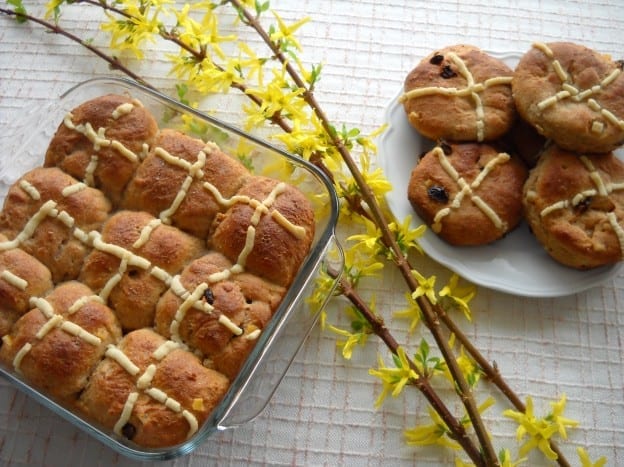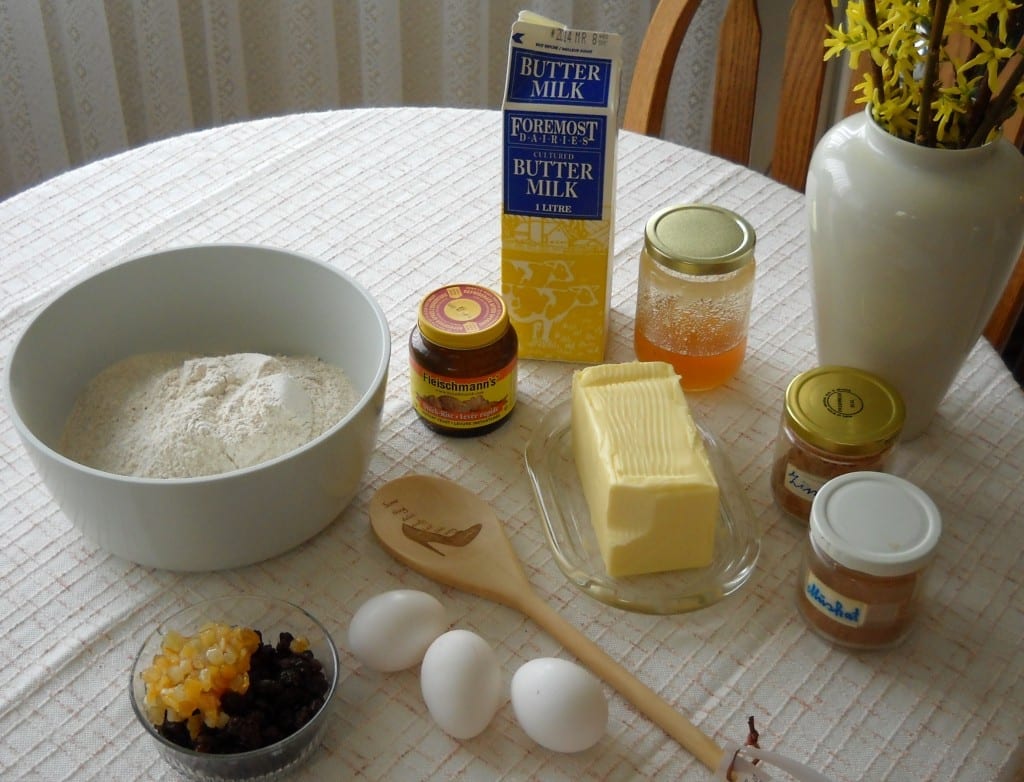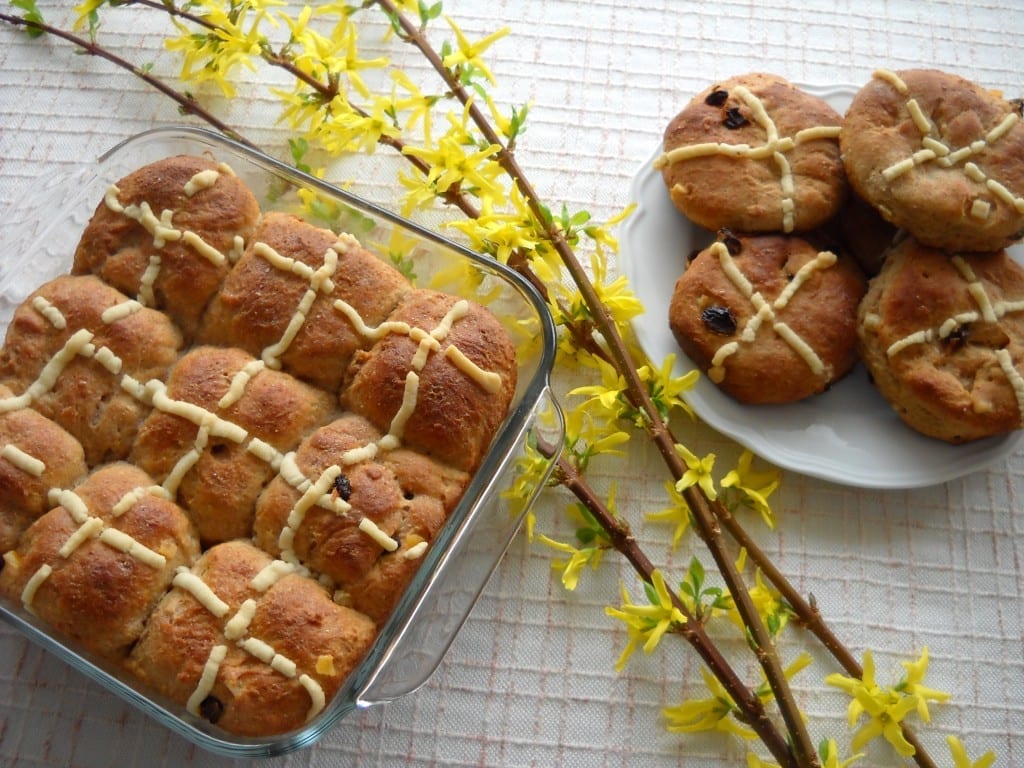The other day I was watching a bit of a BBC special, Tudor Monastery Farm and picked up a couple interesting facts. The average diet in Tudor England was 2 pounds of bread and about 9 glasses of ale a day. The ale was made as a way of ensuring water was safe for drinking. ( I guess the idea of boiling it was not commonly used as tea had not made it’s way into the English diet yet. ) It took 5 acres of grain to feed one person for a year and crops generally failed one year in four.
Since we are moving towards Ostara and all purpose flour would not have been available in the 1500’s or before, I decided to try for a 100% whole wheat Hot Cross Bun to celebrate the coming equinox.
You will need:
2 Tbsp. dry yeast
1/2 cup warm water
1/4 cup honey
1/2 cup butter
3 eggs
1 cup buttermilk
4 – 5 cups of whole wheat flour ( I used regular not the bread variety )
1 1/2 tsp. salt
1/2 cup dried currents
1/4 cup candied peel
1/2 tsp. nutmeg
1/2 tsp. cinnamon
Crosses:
1/2 cup white flour
2-3 Tbsp. melted butter
Melted butter for wash
“Maiden of the wheel comes here, bringing hope for this new year. Spring has come. The grass has riz. I wonder where the flowers is.” Take a moment for yourself. Breath deeply and release slowly, focus on your intention. Is this an offering for Cakes and Ale, a gift for friends or have you just decided to play? Another breath and begin…..
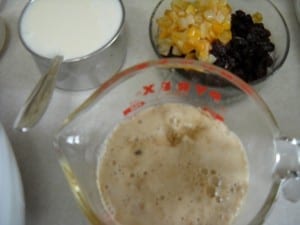 Start by mixing the honey and warm water in a container and adding the yeast. Stir gently and put to the side. The honey ( or sugar in other recipes ) is needed so the yeast has something to feed on. (Always good to know your yeast is viable before adding all the ingredients).
Start by mixing the honey and warm water in a container and adding the yeast. Stir gently and put to the side. The honey ( or sugar in other recipes ) is needed so the yeast has something to feed on. (Always good to know your yeast is viable before adding all the ingredients).
In Henry VII’s time, a bowl of sweetened water was placed by the growing crops to collect the naturally occurring yeasts from the air for bread and ale making. Once the bubbles showed proof of life in the bowl, it was taken inside to be worked.
 In another larger bowl place 4 cups of whole wheat flour, salt and spices. Melt butter. With a hand mixer that has dough hooks or a stand alone mixer, slowly add the melted butter, eggs, buttermilk and yeast/honey/water mixture. Blend well.
In another larger bowl place 4 cups of whole wheat flour, salt and spices. Melt butter. With a hand mixer that has dough hooks or a stand alone mixer, slowly add the melted butter, eggs, buttermilk and yeast/honey/water mixture. Blend well.
This being an end of winter celebration, supplies were generally low so small amounts of fruit and spices were added, not large ones like you would find in something like a Yule Cake.
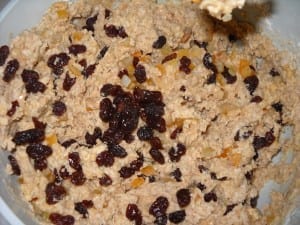 Add fruit and continue to mix.
Add fruit and continue to mix.
This is also a process you can do by hand if you feel inspired. Lynn Meadow, co-author of the Mystic Cookbook said recently, “…often I opt to do it by hand I prefer how it looks, but also I see it as an opportunity to infuse even more love and intention into my food”.
You want the dough to feel sticky but not stick to your fingers. Add up to one cup more flour, a couple of tablespoons at a time as need be.
Once mixed I clean out the bowl I was mixing in, pat the dough into ball, place it back into the bowl with a plate on top to block cold air breezes. It will not double in volume but you will notice a difference in size.
Allow the dough to rest for one hour.
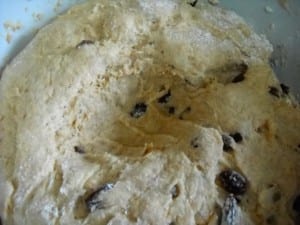 After an hour punch down the mixture, letting some of the carbon dioxide the yeast has created out and take the batter from the bowl.
After an hour punch down the mixture, letting some of the carbon dioxide the yeast has created out and take the batter from the bowl.
If you have a warm place to put your completed buns for a second rise, lovely!
If not turn your oven on to 200 degrees and once it has reached that temperature, turn it off and open the door to allow most of the warm air out. You are creating a cozy incubation space for the yeast so the buns can rise again.
With this recipe I made nine buns in a pan and cut nine buns with a glass to rise on a tray. The hot cross buns we have today have soft sides and are generally square. This is because they are placed so close together to rise the side meets and protect the edges. The more traditional way of making the buns was to cut them round and allow for more room so they stayed round when finished.
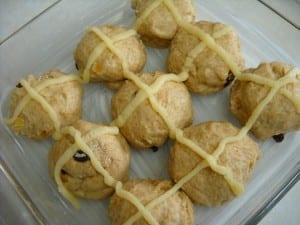 To make the pan version roll nine balls of dough a little bigger than golf balls.
To make the pan version roll nine balls of dough a little bigger than golf balls.
There should be enough room that the balls just touch.
Place the balls in a 3 by 3 grid in a greased 9 x 9 pan. If you are using all the dough this way choose a larger pan.
Pat the rest of the dough about one inch thick and cut with a cookie/biscuit cutter or a glass. Place each bun far enough away from the other buns that they will not touch as they rise a second time.
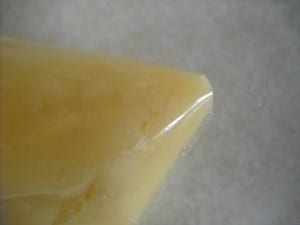 You have two options for creating the cross on top. One is to wait until the buns are finished and cooled, then make a glaze by adding a VERY SMALL amount of liquid to icing sugar until a mixture thin enough to pipe is achieved.
You have two options for creating the cross on top. One is to wait until the buns are finished and cooled, then make a glaze by adding a VERY SMALL amount of liquid to icing sugar until a mixture thin enough to pipe is achieved.
For these buns, I made the flour paste version. Mix the all purpose flour with the melted butter. Put into a plastic bag and snip off a small section of the corner. Not too big or there will be too much coming out. Give this mixture enough liquid butter to be soft enough to expand as the buns rise or they will split like the pictures show below. The butter will thicken this mixture as it cools so work fast or if the mixture gets too hard to pipe, pop it in the microwave for a few seconds to resoften. Pipe the crosses on the tops of the buns.
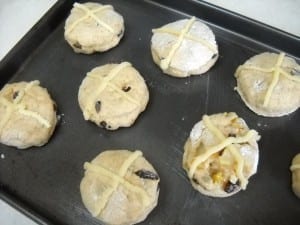 Allow your buns to rise again until double. This will take 30 to 45 minutes. Do not let the buns rise for a full hour or you will find they will probably have overrisen and will likely collapse. Yes, that is experience talking, I got called away to the phone.
Allow your buns to rise again until double. This will take 30 to 45 minutes. Do not let the buns rise for a full hour or you will find they will probably have overrisen and will likely collapse. Yes, that is experience talking, I got called away to the phone.
Heat your oven to 350 degrees and bake for 20 minutes ish, until golden brown. I put a finishing wash of melted butter on top once the buns are out of the oven.
It is also possible to do an egg wash before they go in if you are looking for that shiny finish.
For many people these buns represent Easter and Jesus on the cross but the traditions go back much further. I learned they were made as gifts and left on doorsteps, the morning of Spring Equinox. The buns represent the wheel of time and just like an Advent wreaths are symbols of the sacred space to be found within the circle protected by the compassionate spirits of the four directions.
May spring bring you warmth, balance and fond memories. Happy Ostara. Blessed Be.
Whole Wheat Hot Cross Buns from My Kitchen Wand

